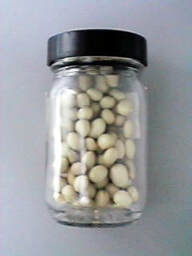
Not only must you use open-pollinated plants but you must prevent contamination from other plants of the same species. Note that contamination from other varieties has absolutely no effect on the current season’s fruit characteristics. It only affects the fruit grown from seed of those contaminated varieties. Preventing cross-contamination can be done via several methods.
• Distance: make sure that your plants are far enough away from other varieties of the same species that the pollen from neighboring plants cannot reach yours. The distance varies considerably depending on species and whether the plant is wind or bee pollinated.
• Mechanical: This can be as simple as covering the unopened female flower of a bee pollinated plant with a bag and then hand pollinating with the male flower of the same variety. The bag is then placed back over the flower until the fruit starts to form. This is commonly used for the vine crops such as squash, muskmelon and watermelons as these produce separate male and female flowers and are bee pollinated. Another mechanical method is to place a screened-in cover over plants that are bee pollinated. This would work well for peppers.
• Time of Flowering: Commonly used for sweet corn. Many farmers will plant a small area of sweet corn in with their field corn even though sweet corn quality is much less if it crosses with field corn. The reason this can work is usually the sweet corn has finished pollination by the time the field corn tassels, thereby preventing contamination.
This seems way too complicated. Is there an easy way to start? Yes there is! Start with tomatoes. They will not cross-pollinate unless you grow a potato-leaved variety. Therefore, you can grow several different open-pollinated varieties in the same garden without worrying about contamination.
If you would like to save seed from other species, I would suggest you buy a good reference. The book I use is “Seed to Seed” by Suzanne Ashworth. (Ward Upham)
 RSS Feed
RSS Feed
